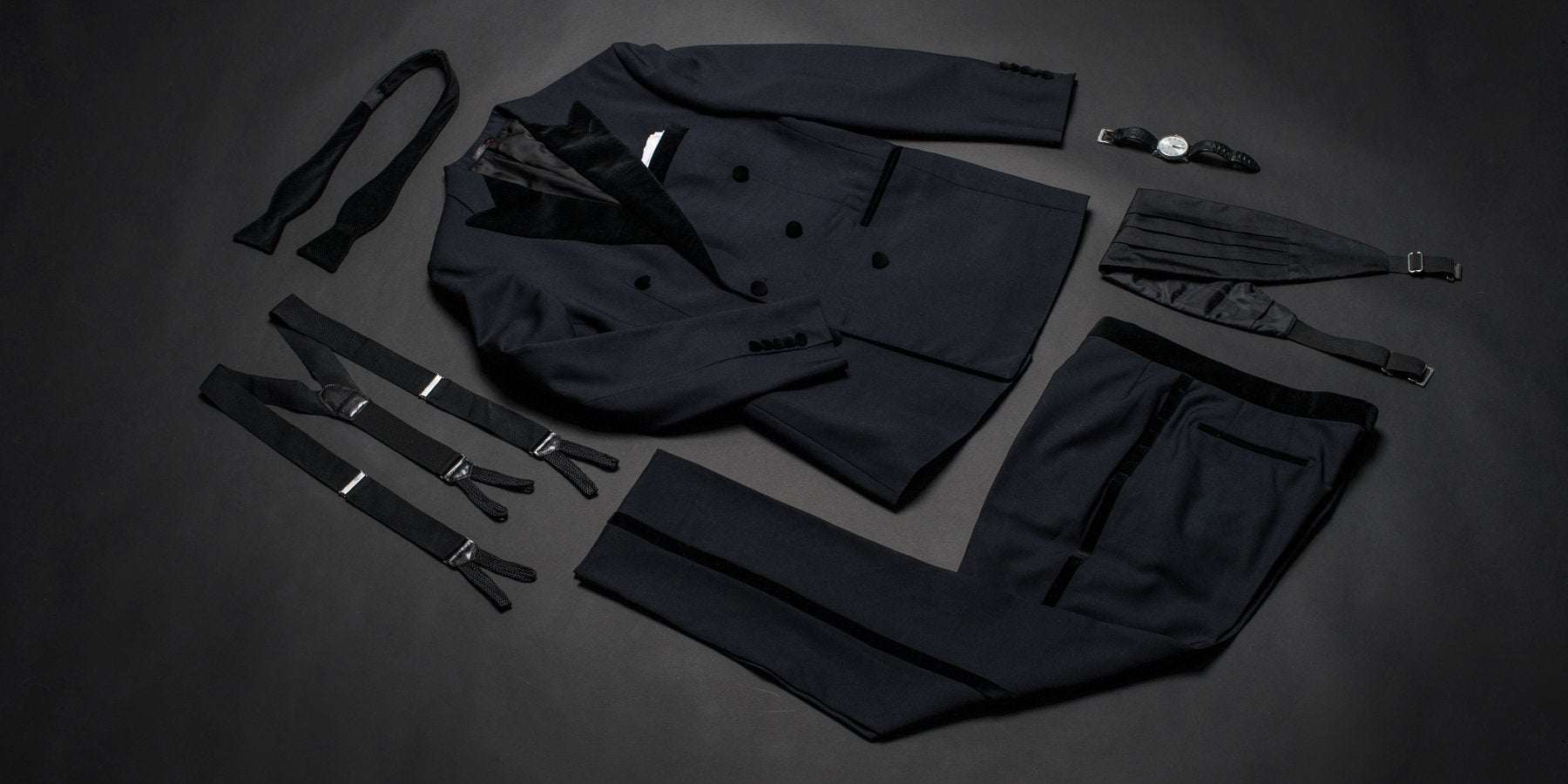When it comes to formal menswear, there are all kinds of traditional “rules”. Talk to a English traditionalist, for example, and he can go on and on about morning coats with tails and white gloves. Most of these “rules” are no longer enforced by the modern day fashion police, but some of them can still help you be the best-dressed guy at any black tie event.
I broke down the traditions of past into some simple guidelines that I recommend following in order to nail a formal look. Just remember that tuxedos are for celebrating, so after getting all the details right, forget about them and focus on drinking, dancing, and generally being merry.
1. DON’T RENT A TUX
Firstly, you can’t have a rental tux altered properly. They might let you shorten or lengthen the sleeves an inch, but that’s about it. When you’re in the tuxedo renting business, you can’t afford to take-in and take-out the garments to meet the needs of each customer. Invest in a classic tuxedo that will last the test of time and you’ll save money in the long run (probably after only two or three wears). And don’t skimp on the tailoring! This is a time when you should look your absolute best.
2. TUXEDOS ARE FOR EVENINGS
A tuxedo is meant to be worn in the evening. Daytime formal is more of a dark suit, white shirt, black tie kind of thing. If the event begins before sundown but runs late into the night, there’s no problem commuting in a tux a little early. And of course, if your host requests black tie attire for a daytime event, it’s better to be a cooperative guest than a stickler for the “rules”.
3. BUY THE RIGHT JACKET
A tuxedo is essentially a very minimalist suit, with a few important design changes. The jacket should be cut from midnight blue or black worsted wool (or mohair) with the lapels and buttons “faced” (covered) in black silk. It should have peak lapels or a shawl collar and only have one button, unless it’s double-breasted. The front pockets should be double-besom (no flaps) and although traditionally a tuxedo jacket was unvented, I prefer double-vents as to not sit all over the rear hemline.
4. CHOOSE THE RIGHT TIE
A peak lapel tuxedo can be worn with a straight tie or bowtie, but a shawl collar jacket should only be worn with a bowtie. Either way, that tie should be cut from the same silk as the lapels and trims of the tuxedo. A bowtie should always be tied by hand; avoid cheesy perfectly-symmetrical pre-tied things.
5. NAIL THE FORMAL SHIRT
There are two basic types of formal shirt: hidden placket (where the buttons are covered by a layer of fabric) and studded front (where the buttons are replaced by metal shirt studs). Obviously, the shirt should be crisp white, but look for one in a rigid textured cloth that will keep a stiff board-like shape. Front pleats on the bib of the shirt are optional, but french cuffs are necessary. I’m not a huge fan of the wing collar…I’d stick with a point collar.
6. COVER THY TUMMY
The waistband of the trouser (and the low belly) should always be covered, either by a cummerbund (pleats facing upward, remember it's originally a “crumb catcher“) or by a waistcoat. This keeps the look clean and sharp by covering up the billowiness of the shirt around the midsection. A formal waistcoat is typically cut lower and wider than a suit vest; with a “U Shape” that has only three buttons.
7. LEAVE THE BELT AT HOME
Whichever tuxedo design you choose, formalwear means no belt. A tuxedo trouser should have plain waistband, or discreet side-adjusters, with suspender buttons on the inside. If you’re going with suspenders, stick with black silk (to match the trims) or white silk (to blend with the shirt) and wear them under the cummerbund or waistcoat.
8. FORMAL SHOES & SOCKS
For formal shoes you have two options: patent leather “pumps” (like opera loafers) or whole-cut plain toe lace-ups (if they’re not patent leather, make sure they have a fresh shine). I don’t often use the word “hosiery” with menswear, but a thin black formal sock is proper for formal attire (especially if you go with pumps, which have a low vamp and expose some of the foot/ankle).
9. ACCESSORIZE GENTLY
Over-accessorizing can quickly ruin a formal look. The whole idea of a tuxedo is to be as simple and uniform as possible (in order to let the women shine in their beautiful gowns!). All you need is a white pocket square folded flat and just peeking from the breast pocket, a simple wristwatch with a thin face and leather (or alligator) band, and if you’re feeling dandy, maybe a silk formal scarf to go with a beautiful topcoat in the colder months. Above all remember to keep it simple. Less is more – it’s all about fit and proportions.
If you have any specific questions about formal attire, please use the comment section below.
Thanks, as always, for reading.
Yours in style,
Dan Trepanier

